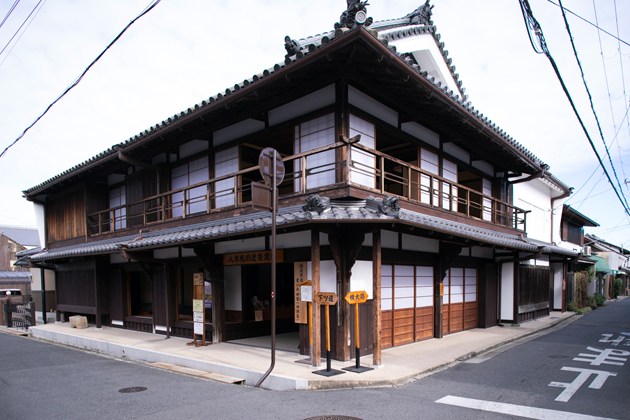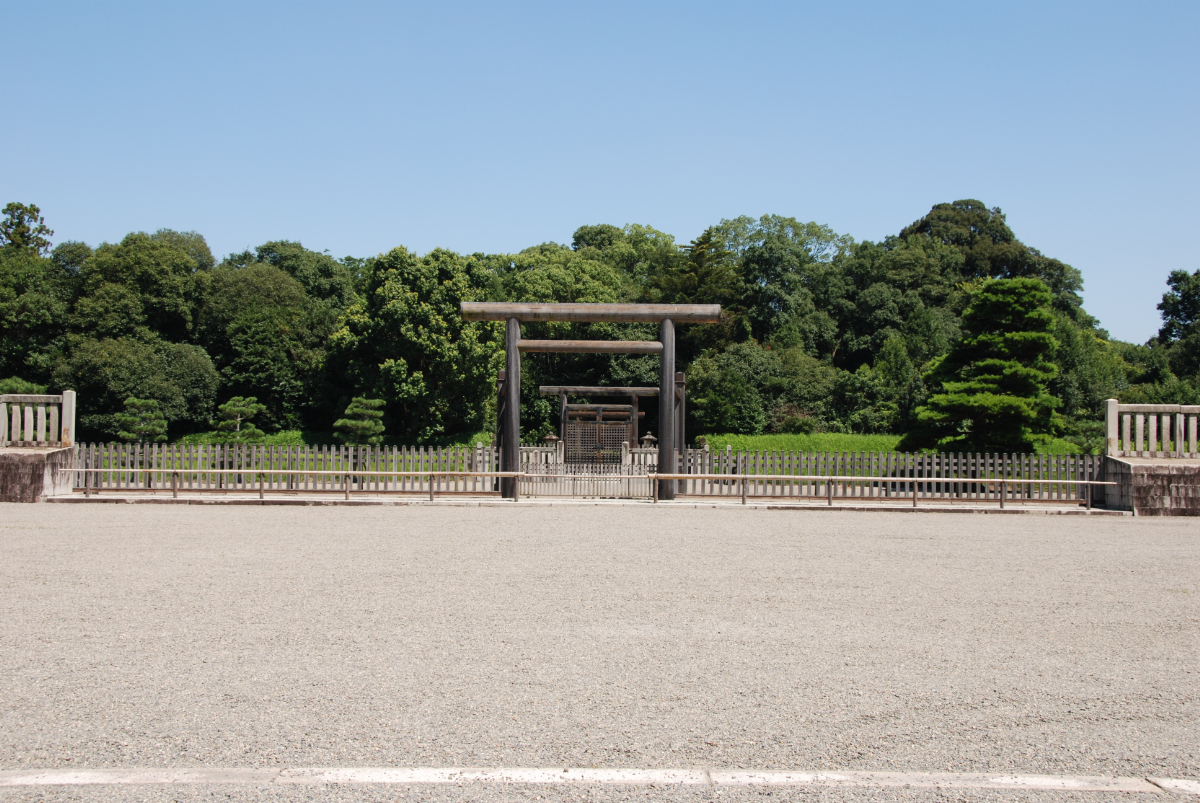Ancient period
(from the 6th century BC)
Kashihara, the place where Japan began.
The story is from the "Nihon Shoki," which is the oldest authentic history of Japan.
Kamu Yamato Iwarebiko (later Emperor Jinmu), the first emperor of Japan, founded the Kashihara-no-Miya (Palace of Kashihara). He came to this area from Hyuga Province (present-day Miyazaki Prefecture). On January 1, 660 B.C., he ascended to the throne and became the first emperor.
In 694, Japan's first capital, Fujiwara-Kyo, was built in Kashihara.
It was the first capital in Japan to adopt the " Jobo system," the north-south and east-west roads were combined in a symmetrical grid pattern, with Suzaku-Oji in the center.
Fujiwara-Kyo continued for 16 years until the capital moved to Heijo-Kyo in 710.

■■■
Medieval and early modern periods
(from around the 16th century)
Kashihara became a commercial city
that is highly regarded even by the Shogunate.

■■■
In the medieval period, Kashihara had many arterial roads built one after another, such as Yoko-Oji and Shimotsu-Michi. Because of this, the area was full of people making pilgrimages to Ise and Kumano.
Later, famous historical figures such as Matsuo Basho, Motoi Nobunaga, and Yoshida Shoin visited this area.
Imai-Cho was born as a missionary base for the Ikkou sect of Buddhism. In the Sengoku period, the town was exposed to battles with the warlord Oda Nobunaga's army but surrendered to him via Akechi Mitsuhide.
he town was then granted autonomous privileges and developed into a commercial city, flourishing exchange with Osaka and Sakai.
The town was then granted autonomous privileges and developed into a commercial city, flourishing exchange with Osaka and Sakai. The city's prosperity was so great that it was known as "the gold of Yamato is divided into seven parts by Imai" and "Sakai of the sea and Imai of the land."
Modern period
(from the late 19th century)
The Kashihara Jingu Shrine, built at the foot of Mt. Unebi-Yama
At the end of the Edo period, the area attracted attention as the site of the founding of Emperor Jinmu, and the Kashihara Jingu Shrine was built in 1890.
At the same time, the development of the railroad network began.
As a result, the nexus of transportation from east to west, north to south, and south to north from ancient times have been reconfirmed, and the area remains a central transportation hub.
There are 13 stations scattered throughout the city, providing easy access to the city and major urban areas in the prefecture and neighboring towns.

■■
Present
(from the late 20th century )
Living and sightseeing are in harmony.
Therefore, it is the perfect town for a sightseeing base.

■■
Today, urbanization has progressed through rapid economic growth, and the city has developed dramatically as the second-largest city in the prefecture.
On the other hand, it has also become famous as a tourist destination for its many historical and cultural assets, such as the ruins of the Fujiwara Palace and the old streets of Imai-Cho.
It is also an ideal base for visiting the Yoshino area with its beautiful cherry blossoms and the famous Hase-Dera Temple, a temple of flowers, and other hot spots.


